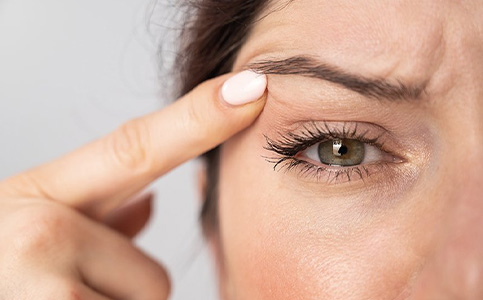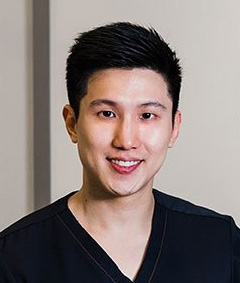Botox treatment, which is one of the most popular anti-aging procedures these days, is performed to eliminate or minimize the appearance of wrinkles and other signs of aging for cosmetic purposes. This minimally invasive procedure uses a type of toxin from a bacterium called Clostridium botulinum. When used in small doses, it is capable of keeping skin wrinkling at bay without causing negative side effects. It works by weakening or paralyzing the targeted muscles that create wrinkles or by temporarily blocking specific nerves from contracting. Each anti-aging botox treatment can keep the face wrinkle-free for as long as six months.

Contents
- 1 Why it’s done
- 2 What are the risks of getting a botox injection?
- 3 What to do before getting botox treatment?
- 4 Consultation Is Important
- 5 Botox aftercare instructions:
- 5.1 1. Avoid make up
- 5.2 2. Stay standing for 4 hours
- 5.3 3. Avoid exercise
- 5.4 4. Avoid sun exposure
- 5.5 5. Do not put pressure on the treated area
- 5.6 6. Avoid facials and other skin treatments
- 5.7 7. Avoid alcohol
- 5.8 8. Avoid touching the treated area
- 5.9 9.Avoid taking blood thinning and anti-inflammatory medication
- 6 Conclusion
Why it’s done
Botulinum toxin injections block certain chemical signals from nerves, mostly signals that cause muscles to contract. The most common use of these injections is to temporarily relax the facial muscles that cause facial wrinkles in the forehead and around the eyes. Botox injections are also used to treat conditions that affect how the body functions. Examples include:
- Cervical dystonia.
In this painful condition, your neck muscles contract involuntarily causing your head to twist or turn into an uncomfortable position, neck spasms.
- Lazy eye.
The most common cause of lazy eye is an imbalance in the muscles responsible for positioning the eye.
- Muscle contractures.
Some neurological conditions, such as cerebral palsy, can cause your limbs to pull in toward your center. In some cases, these contracted muscle can be relaxed with botox treatments.
- Hyperhidrosis.
In this condition, excessive sweating occurs even when the temperature isn’t hot and you’re not exerting yourself.
- Chronic migraine.
If you experience migraines more than 15 days a month, Botox injections may help reduce headache frequency.
- Bladder dysfunction.
Botox injections can also help reduce urinary incontinence caused by an overactive bladder.
- Eye twitching.
Botox injections may help relieve contracture or twitching of muscle around the eye.

What are the risks of getting a botox injection?
The risks of Botox injections are small if it’s done correctly by a suitably qualified practitioner. Speak to your practitioner about the risks.
After treatment you may have:
a headache and flu-like symptoms for the first 24 hours after treatment
bruising, swelling and redness
a frozen look if too much Botox is injected
temporary weakness and droopiness on your face
eye dryness or excessive tearing

Although very unlikely, it’s possible for the toxin in the injection to spread in your body. Call your doctor right away if you notice any of these effects hours to weeks after receiving Botox:
· Muscle weakness
· Vision problems
· Trouble speaking or swallowing
· Breathing problems if the neck area is injected
· Loss of bladder control
Doctors generally recommend against using Botox when you’re pregnant or breast-feeding.
What to do before getting botox treatment?

Avoid taking blood thinning medications or anti-inflammatory drugs such as Aspirin, Ibuprofen, Fish oil, Ginko Biloba and high doses of vitamin E for at least 7 days prior to botox procedure, as blood thinning medications may increase risk of bleeding and bruising at the treated areas.
Avoid alcohol beverages for 24 hours prior to botox procedure as this can increase blood flow as well as promote bruising and bleeding at the injection sites.
If you have any history of medical conditions such as Herpes Simplex (cold sores) on your face, make sure you inform the doctor so that he could prescribes medication to prevent outbreak.
Sunburn skin is difficult to treat so avoid heat exposure such as hot showers, sauna, hot tubs, tanning beds and direct sunlight exposure.
Always inform your doctor of all medical treatment, medications, including supplements you may be taking as well as your medical history to get optimal results.
Consultation Is Important

Before getting botulinum toxin aesthetic medicine, the aesthetic clinic should offer a consultation with doctor.
A professional will ask you to smile, frown and raising your eyebrows. These expressions show them how your facial muscles naturally moves so they can place injections correctly.
A consult should includes a comprehensive health assessment to make sure that you are completely normal. The doctor will need to know whether you’re taking any medications that can interact with the Botox, so that doctor can customize a suitable treatment plan for you.
Botox aftercare instructions:
For after botox care, as long as your daily routine does not involve strenuous physical activity or direct sunlight exposure, there is no need to take time off school or work after botox injection. Lighter day-to-day activities like walking, cooking, and cleaning should be safe.

1. Avoid make up
It is recommended that to avoid make up on the injection site for 6-10 hours for botox aftercare, as well as any skincare products you use on your face. This can irritate the treatment area and potentially disrupt healing.
2. Stay standing for 4 hours
Keep your head upright. No lying down, shoe shopping, avoid sleeping or leaning forward for 2-4 hours after treatment. Stay standing for around 4 hours after the treatment for the toxin to not spread.
3. Avoid exercise
Botox aftercare including avoid strenuous exercise. Botox will take about 20 minutes to settle in the muscles, and while you could potentially still hit the gym later in the day after 6 hours, it’s better if you take the day off. However, after a day you are more than welcome to return to your normal activities.
4. Avoid sun exposure
Continue to stay out of direct sunlight for 24 hours after treatment. Avoid heat exposure for 24 hours, which includes hot showers, tanning beds, hot tubs, and saunas. This may cause temporary redness, swelling, and/or itching at the affected area. However, you may resume your physical activity after a day.
5. Do not put pressure on the treated area
The first night after inject botox, do not sleep on the treatment area. This may mean you need to sleep on your back. Do not massage, apply pressure and avoid rubbing on the injected area for 6-8 hours after botox procedures since Botox may migrate to other areas as well as affect the effects of botox.
6. Avoid facials and other skin treatments
For botox aftercare, avoid facials and other skin treatments such as microdermabrasion, ultrasonic cleansing, radiofrequency procedure, cabin pressure or face and body massage for 14 days after treatment.
7. Avoid alcohol
While alcohol consumption after Botox is not usually a risk, it is recommended you not drink alcohol for 24 hours as a precautionary measure to prevent bruising. Alcohol is a blood-thinner, so it could potentially accelerate blood flow exacerbate bruising and swelling. This can affect recovery from botox and cosmetic fillers (dermal fillers). Some patients also experience dizziness or drowsiness after botox procedure.
8. Avoid touching the treated area
Any bumps or marks will subside within a few hours. There is occasionally some mild pain, swelling, itching, or redness at the injection sites similar to most other injections. Redness may last for 1-2 days, rarely longer. You may apply cold compress to reduce swelling or discomfort.
9.Avoid taking blood thinning and anti-inflammatory medication
For botox aftercare, do not take blood thinning medication or other non-steroidal anti-inflammatory drugs such as Aspirin, Ibuprofen, Fish oil, Ginko Biloba and high doses of vitamin E for at least 7 days prior to botox treatment, as blood thinning medication may increase risk of bleeding and bruising at the treated areas.
Conclusion
Botox is relatively safe and does not result in any adverse side effects from peer reviewed studies. However, in certain circumstances, the effect of Botox will gradually resolve, resulting in reduced muscle paralysis over time. Botox is good and safe medicine to reduce the appearance of facial wrinkles.




